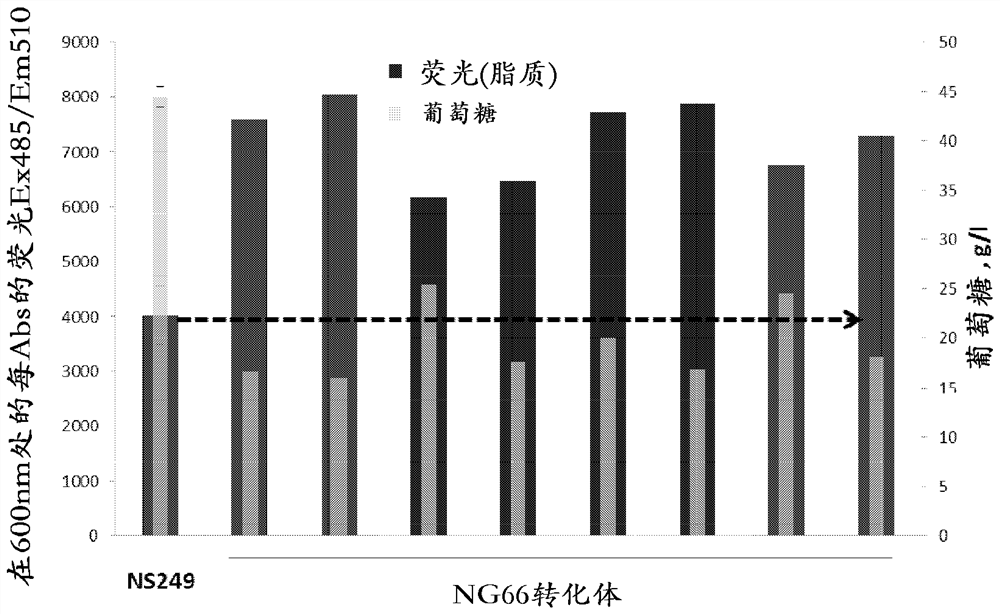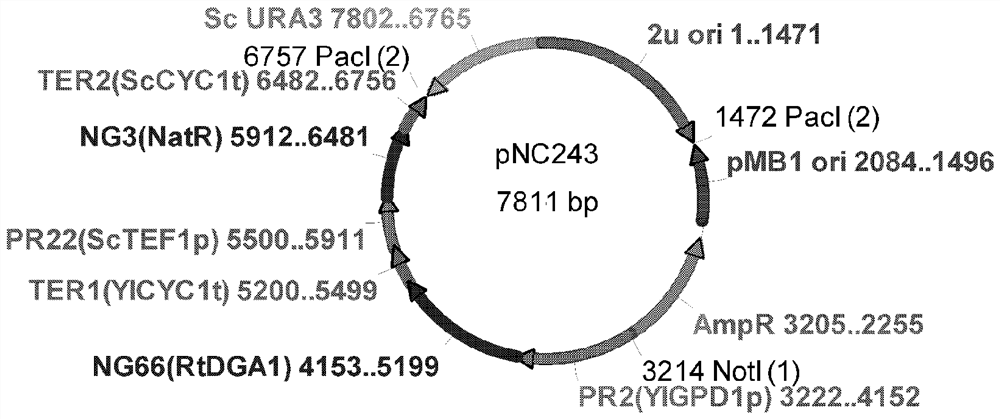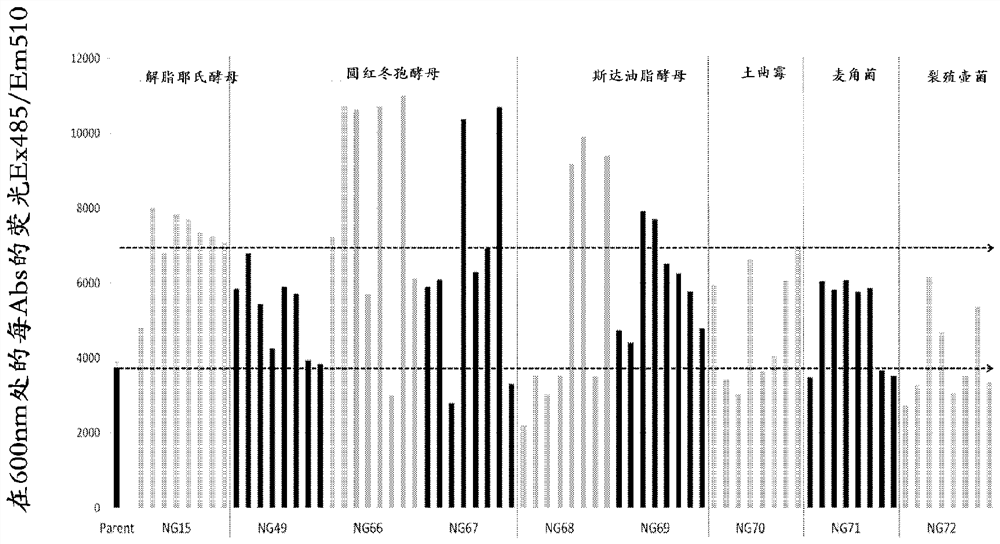Diacylglycerol Acyltransferase (dga1) polynucleotides, and methods of increasing lipid production in yeast cells by overexpression of heterologous dga1
A polynucleotide, yeast cell technology, applied in the direction of acyltransferase, transferase, biochemical equipment and methods, etc., can solve problems such as unreported lipid production levels
- Summary
- Abstract
- Description
- Claims
- Application Information
AI Technical Summary
Problems solved by technology
Method used
Image
Examples
Embodiment 1
[0115] Example 1: Identification of DGA1 polynucleotides and polypeptides
[0116] To test the hypothesis that DGA1 from highly oleaginous organisms could significantly increase lipid production in Yarrowia lipolytica, organisms reported to have very high levels of lipid accumulation were reviewed. (Sitepu et al., 2013; Liang et al., 2013; Ageitos et al., 2011; Papanikolaou et al., 2011; Pan et al., 2009; Ratledge et al., 2002; Kaneko et al., 1976). A list of organisms with a reported lipid content of about 50% and above is shown in Table 1. Rhodosporidium toruloides and Liposporidium stada were reported to have the highest lipid content. Of the organisms in Table 1, only 5 have publicly available sequences for the DGA1 gene (in bold in Table 1). The DGA1 genes from 5 selected donors (Rhodosporidium toruloides, Liposporidium stada, Schizochytrium, Aspergillus terreus and Ergot) were thus placed under the control of the Yarrowia lipolytica promoter and terminator in Expresse...
Embodiment 2
[0224] Example 2: Recombinant Yeast Host Cells with Increased Lipid Production
[0225] A total of 9 different DGA1 genes were expressed in Y. lipolytica under the same strong Y. lipolytica GPD1 promoter (Table 2 and figure 1 ). figure 1 Expression construct pNC243 for overexpression of Rhodosporidium toruloides DGA1 gene NG66 in Yarrowia lipolytica is shown. All other DGA1 expression constructs were identical to pNC243, except for the DGA1 ORF described in Table 2. The DGA1 expression construct was linearized by PacI / NotI restriction digestion before transformation ( figure 1 ). The linear expression constructs each included an expression cassette for the DGA1 gene and the Nat1 gene, which was used as a marker for selection with nourstactin (NAT). Expression constructs were integrated randomly using a transformation protocol as described in Chen (Chen DC et al., One-step transformation of the dimorphiceast Yarrowia lipolytica. Appl Microbiol Biotechnol. 1997 Aug;48(2):232...
Embodiment 4
[0227] Example 4: Lipid Analysis
[0228] 1. Prepare growth medium:
[0229]
[0230] 2. Plate strains in YPD or other appropriate media for analysis and incubate at 30°C for 1-2 days
[0231] 3. Fill medium in autoclaved 250mL flasks, 24-, 48- or 96-well plates:
[0232] Flask: 50mL per flask
[0233] 96-well plate: 300 μL per well
[0234] 4. Cover the flask with aluminum foil and cover the plate with a porous cover.
[0235] 5. Incubate at 30°C for 72 to 96 hours with shaking
[0236] · Flask: 200rpm in New Brunswick Scientific
[0237] Shake plate: 900rpm, 70-90% humidity in Infors Multitron ATR shaker
[0238] 6. Mix 20 μL of cells with 20 μL of 100% ethanol in the assay microplate and incubate at 4°C for 30 minutes
[0239] 7. Create a mastermix (80 μL per reaction):
[0240]
[0241]
[0242] 8. Aliquot the master mix into Costar Black wells / clear bottom plates (800μL / well)
[0243] 9. Add 20 μL of ethanol / cell mixture and cover with clear seal
[024...
PUM
| Property | Measurement | Unit |
|---|---|---|
| absorbance | aaaaa | aaaaa |
Abstract
Description
Claims
Application Information
 Login to View More
Login to View More - R&D
- Intellectual Property
- Life Sciences
- Materials
- Tech Scout
- Unparalleled Data Quality
- Higher Quality Content
- 60% Fewer Hallucinations
Browse by: Latest US Patents, China's latest patents, Technical Efficacy Thesaurus, Application Domain, Technology Topic, Popular Technical Reports.
© 2025 PatSnap. All rights reserved.Legal|Privacy policy|Modern Slavery Act Transparency Statement|Sitemap|About US| Contact US: help@patsnap.com



